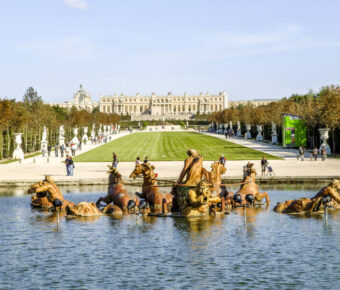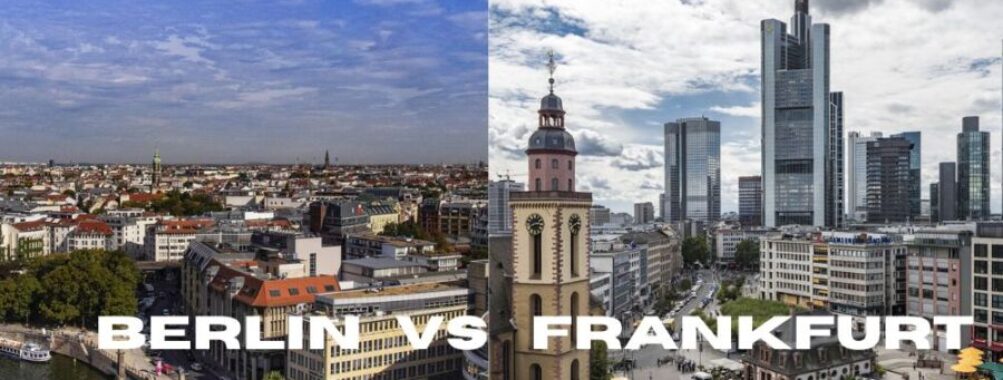
Berlin vs Frankfurt: Which German City Offers the Best Experience?
Berlin and Frankfurt stand among Germany’s most prominent cities, offering travelers a unique glimpse into German life. Berlin pulses with artistic energy and historical significance as the nation’s capital, while Frankfurt shines as a modern financial hub with surprising cultural depth.
Berlin edges out Frankfurt for most visitors due to its larger size, richer history, and more diverse cultural scene. The city spans five times the area of Frankfurt and brims with significant landmarks like the Brandenburg Gate and remnants of the Berlin Wall.
Frankfurt packs plenty of appeal into its smaller footprint. The city’s compact size makes it easy to explore by bike or foot, and its mix of sleek skyscrapers and traditional German architecture creates an interesting urban landscape. Both cities deserve attention, but they deliver very different experiences for travelers seeking to explore Germany.
Contents
- A Tale of Two Cities: Berlin and Frankfurt
- Political and Economic Significance
- Cultural Beats: Art and History
- Historical Landmarks and Attractions
- Berlin Wall and Brandenburg Gate
- Römerberg and Frankfurt Cathedral
- City Life: Exploring Arts and Entertainment
- Museums and Art Galleries
- Nightlife: Bars, Clubs, and Live Music
- Culinary Journeys: Food and Dining
- Traditional Delicacies in Berlin and Frankfurt
- Diverse Dining: From Street Food to Fine Dining
- Shopping and Commerce
- Boutique Paradise vs. Financial Districts
- Unique Shopping Experiences
- Green Spaces and Relaxation
- Parks and Gardens
- Outdoor Activities and Leisure
- Connectivity and Transportation
- Public Transport Networks
- Ease of Access to Nearby Attractions
- Accommodation Options
- Hotels and Hostels
- Alternative Lodging Choices
- Architecture and City Design
- Historic and Modern Architecture
- Urban Planning and Cityscapes
- Frequently Asked Questions
- Which city offers a more affordable cost of living, Berlin or Frankfurt?
- How do weather patterns differ between Frankfurt and Berlin?
- In terms of size and population, how do Berlin and Frankfurt compare?
- Discuss the benefits of residing in either Berlin or Frankfurt
- Between Berlin and Frankfurt, which city is generally perceived as more popular among residents and tourists?
- What are the key differences in the cultural scenes of Berlin and Frankfurt?
- More Travel Guides
A Tale of Two Cities: Berlin and Frankfurt
Berlin and Frankfurt showcase two distinct sides of Germany – one as the political and cultural heart, the other as the financial powerhouse. Each city offers unique attractions, rich history, and different experiences for visitors.
Political and Economic Significance

Berlin stands proud as Germany’s capital, serving as the hub of national politics and government since reunification in 1990. The city hosts major political institutions like the Bundestag and Federal Chancellery.
Frankfurt shines as Germany’s financial capital. The city’s skyline, dotted with gleaming skyscrapers, earned it the nickname “Mainhattan.” The European Central Bank calls Frankfurt home, making it a key player in EU monetary policy.
Many global banks and financial firms maintain their German headquarters in Frankfurt. The Frankfurt Stock Exchange ranks among Europe’s largest trading centers.
Cultural Beats: Art and History
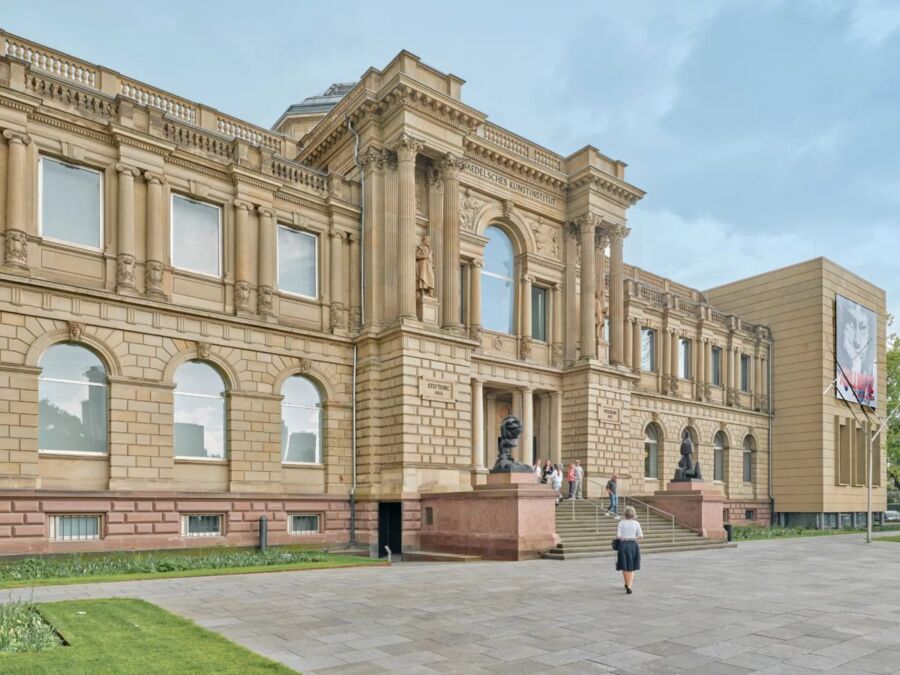
Berlin’s art scene thrives in its many galleries, street art, and creative spaces. The East Side Gallery, a preserved section of the Berlin Wall, stands as the world’s largest open-air gallery.
The city’s Museum Island houses five world-class museums. Berlin’s nightlife and alternative culture attract artists and musicians from around the globe.
Frankfurt’s cultural offerings focus on its well-preserved old town, the Römerberg. The Städel Museum displays an impressive collection of European art spanning seven centuries.
The contrast between Frankfurt’s medieval architecture and modern buildings tells the story of its transformation. The city’s Opera House and dozens of museums add depth to its cultural landscape.
Historical Landmarks and Attractions
Both cities hold amazing pieces of German history through their architecture and monuments. Berlin stands as a testament to Germany’s 20th-century struggles, while Frankfurt shows off medieval charm mixed with modern life.
Berlin Wall and Brandenburg Gate
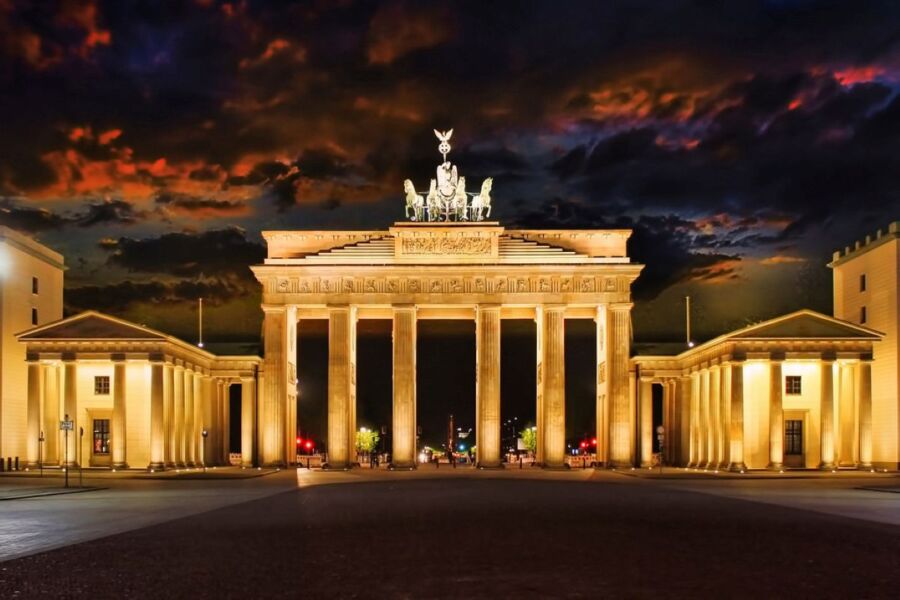
The Berlin Wall remains the city’s most powerful symbol. You can spot pieces of it throughout Berlin, but the East Side Gallery stretches for 1.3 kilometers as the longest remaining section. Artists from around the world covered this part with colorful murals that tell stories of freedom and unity.
The Brandenburg Gate towers as Berlin’s most famous landmark. This 18th-century monument survived World War II and became a symbol of German reunification. At night, its lit-up columns create an unforgettable sight.
Near these sites sits the Reichstag Building, home to Germany’s parliament. Its glass dome offers amazing city views and a peek into German democracy at work.
Römerberg and Frankfurt Cathedral
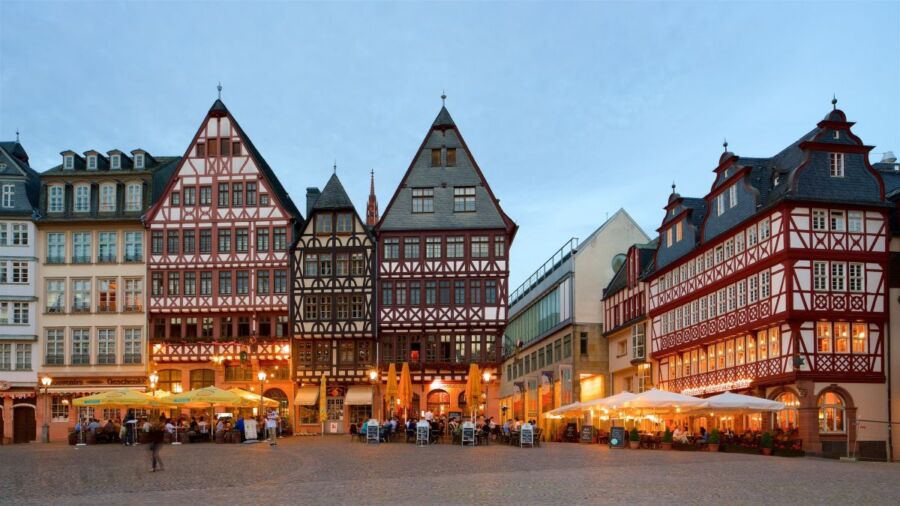
Frankfurt’s Römerberg square sits at the heart of the Old Town. Medieval buildings line this historic plaza, including the iconic Römer – the city hall since 1405. These buildings got rebuilt after WWII using original plans and traditional methods.
Frankfurt Cathedral rises 95 meters high with its red sandstone tower. Though bombs damaged it in WWII, careful restoration brought back its Gothic beauty. The cathedral hosted emperor coronations for centuries.
The Old Town’s narrow streets hide smaller treasures too. Timber-framed houses and tiny squares give glimpses into Frankfurt’s past life as a free imperial city.
City Life: Exploring Arts and Entertainment
Berlin and Frankfurt offer distinct cultural scenes, each with their own artistic flair and entertainment options. Berlin stands out with its avant-garde galleries and world-famous techno clubs, while Frankfurt delivers a refined mix of classical arts and modern nightlife.
Museums and Art Galleries
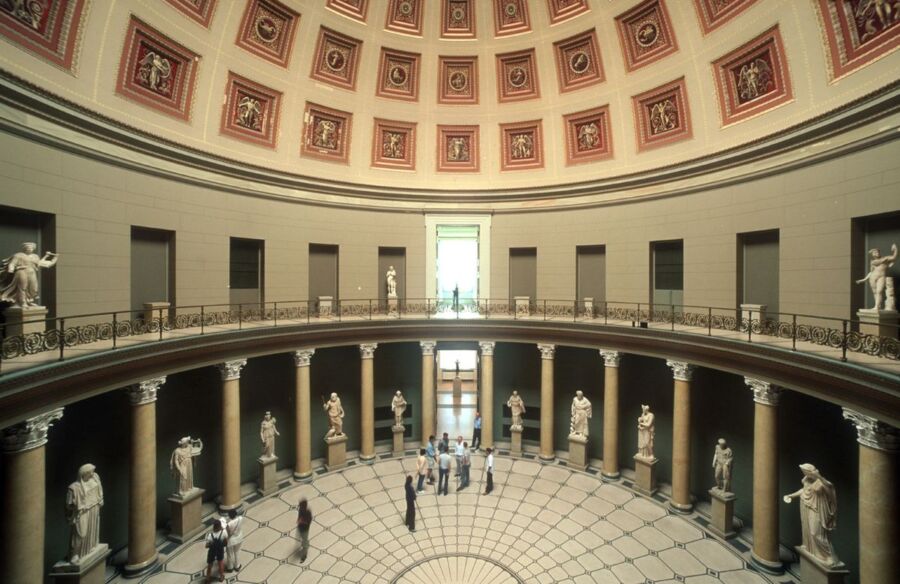
Berlin’s Museum Island boasts five world-class museums, including the spectacular Pergamon Museum with its ancient architectural treasures. The city’s contemporary art scene thrives in hundreds of galleries scattered throughout neighborhoods like Mitte and Kreuzberg.
Frankfurt’s art scene centers around the Städel Museum, home to seven-century European masterpieces. The Museum of Modern Art (MMK) showcases cutting-edge contemporary works in a striking triangular building.
Street art transforms Berlin’s urban landscape into an open-air gallery. Colorful murals and graffiti tell stories of the city’s creative spirit and political history.
Nightlife: Bars, Clubs, and Live Music
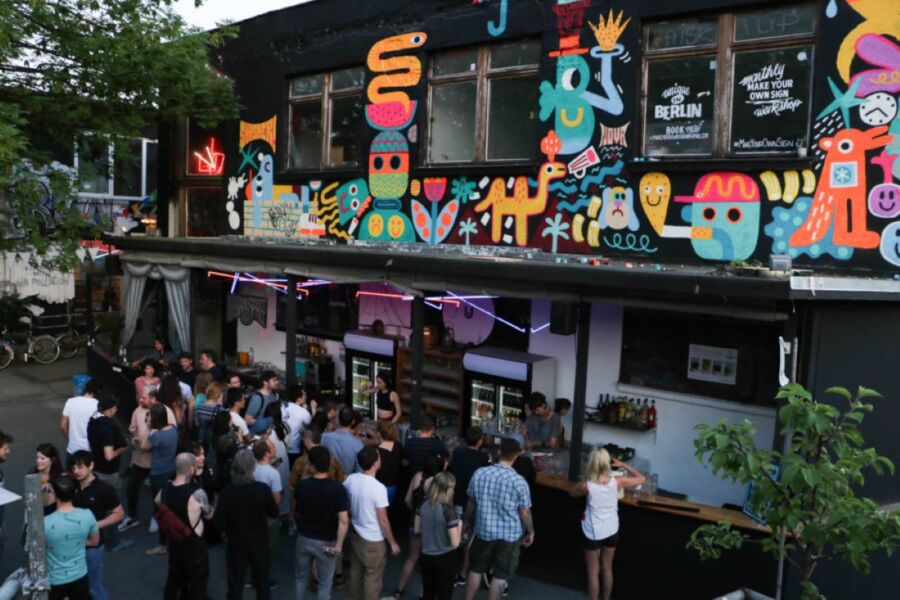
Berlin’s legendary nightlife and entertainment scene never sleeps. The infamous Berghain nightclub draws techno fans from across the globe, while RAW-Gelände complex hosts alternative music venues and art spaces.
Frankfurt’s club scene centers around the Robert Johnson club, known for its intimate atmosphere and quality electronic music. The city’s traditional apple wine taverns provide a more laid-back evening option.
Live music venues dot both cities. Berlin’s SO36 hosts punk and rock shows, while Frankfurt’s Alte Oper presents classical concerts in a stunning historic setting.
Small jazz clubs and indie music venues fill Berlin’s Prenzlauer Berg neighborhood. Frankfurt’s Sachsenhausen district has cozy bars and pubs perfect for late-night drinks.
Culinary Journeys: Food and Dining
Berlin and Frankfurt each offer distinct food scenes that showcase Germany’s rich culinary heritage alongside modern international influences. These cities serve up unique regional specialties while embracing global gastronomy trends.
Traditional Delicacies in Berlin and Frankfurt
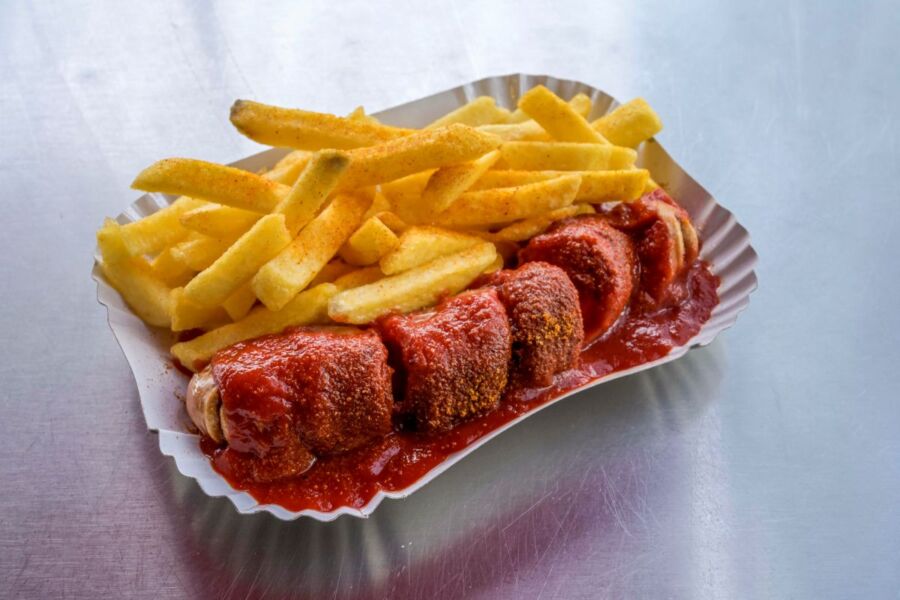
Berlin’s iconic street food star is Currywurst – a grilled sausage topped with curry-spiced ketchup. The best spot to try this local favorite is Curry 36 in Kreuzberg, where locals line up daily for their fix.
Frankfurt brings its own sausage game with the famous Frankfurter würstchen, served with crusty bread and spicy mustard. The city’s signature green sauce (Grüne Soße) contains seven fresh herbs and pairs perfectly with boiled eggs or potatoes.
Handkäse mit Musik, a marinated cheese dish, represents authentic Frankfurt flavor. The “musik” refers to the onions that top this pungent regional specialty.
Frankfurt’s sweet tooth shines through the Frankfurter Kranz, a ring-shaped butter-cream cake decorated with caramel-coated nuts.
Diverse Dining: From Street Food to Fine Dining
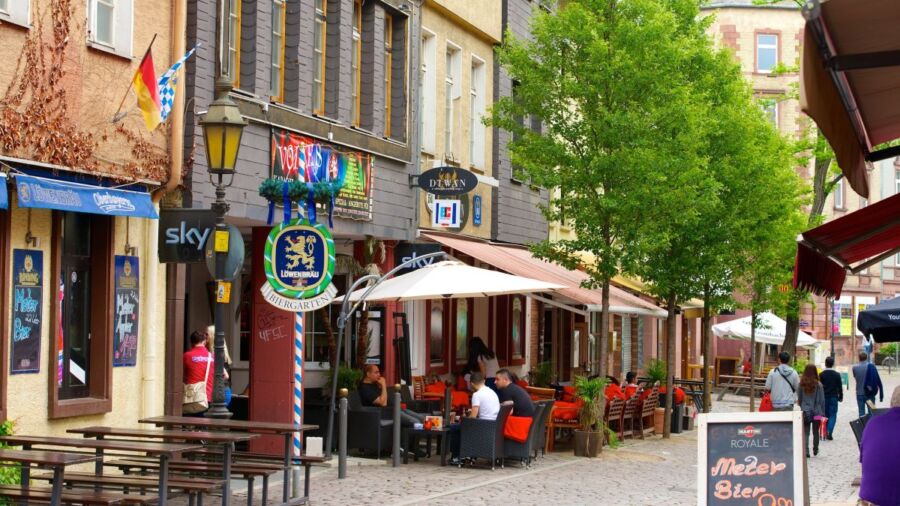
Berlin’s food scene ranges from casual street eats to Michelin-starred restaurants. Tim Raue’s restaurant offers high-end Asian-inspired cuisine, while Syrian, Turkish, and Vietnamese eateries dot the city’s neighborhoods.
Frankfurt’s financial district hosts numerous upscale restaurants serving international cuisine. The Fressgass area buzzes with bistros and cafes perfect for business lunches.
Traditional apple wine taverns (Apfelweinwirtschaften) in Frankfurt’s Sachsenhausen district serve local cider with hearty German meals. These cozy spots offer an authentic taste of Frankfurt’s drinking culture.
Street food markets pop up regularly in both cities, featuring everything from German classics to global street food favorites.
Shopping and Commerce
Both Berlin and Frankfurt offer distinct retail experiences that reflect their unique urban characters. Each city maintains its own special shopping districts with different atmospheres and store selections.
Boutique Paradise vs. Financial Districts
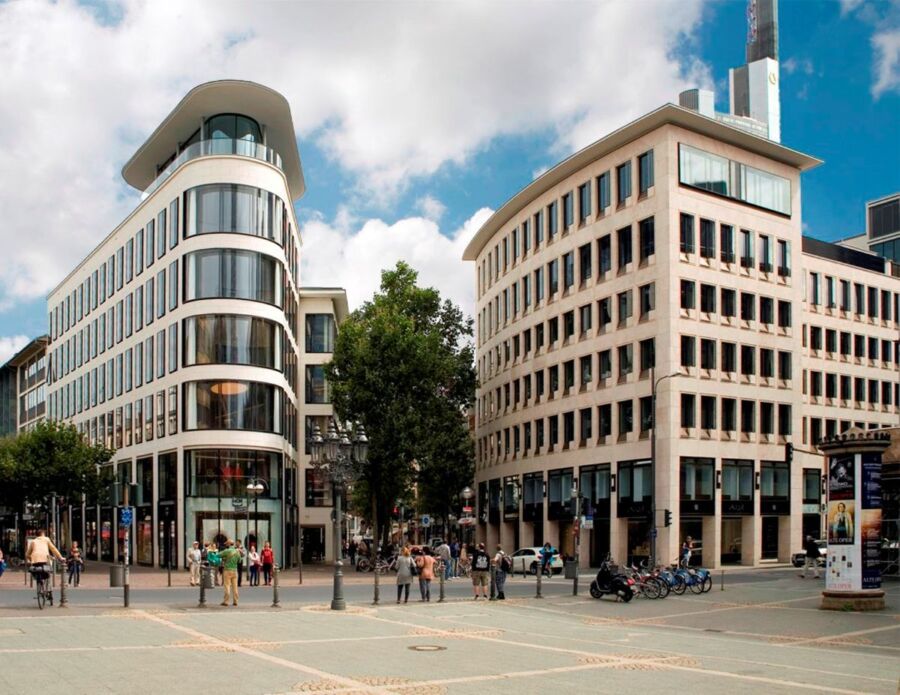
The Kurfürstendamm in Berlin stretches for 2.2 miles and stands as the city’s premier shopping boulevard. Designer brands like Gucci and Louis Vuitton sit next to local Berlin fashion boutiques.
Frankfurt’s Goethestrasse presents a more compact but equally luxurious shopping zone. The street sparkles with high-end jewelry stores and international fashion houses, catering to the city’s banking professionals.
Unique Shopping Experiences
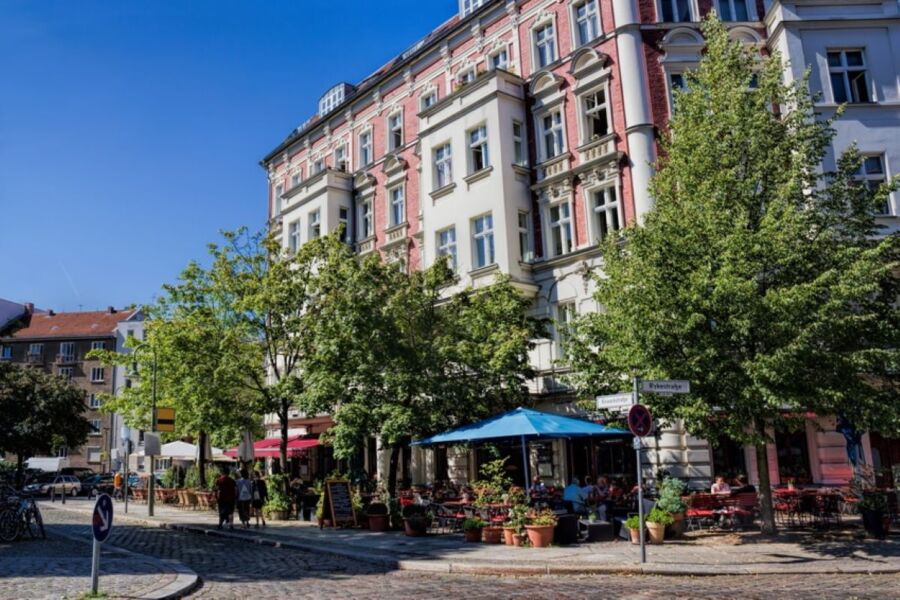
Berlin’s neighborhoods each offer distinct shopping vibes. Vintage stores in Prenzlauer Berg attract treasure hunters, while Mitte hosts independent designer shops and art galleries.
Frankfurt’s MyZeil mall features stunning architecture with a glass vortex design. The mall spans 8 floors and houses over 100 shops under one roof.
Small markets pop up regularly in Berlin’s neighborhoods, selling everything from antiques to handmade crafts. These markets give shoppers a chance to find one-of-a-kind items.
The Zeil in Frankfurt ranks as Germany’s most popular shopping street. Its pedestrian zone makes browsing easy and pleasant, with major department stores and fashion chains lining both sides.
Green Spaces and Relaxation
Both Berlin and Frankfurt offer peaceful green spaces that provide a break from city life. These parks and green areas give residents and visitors plenty of ways to enjoy nature and outdoor activities.
Parks and Gardens
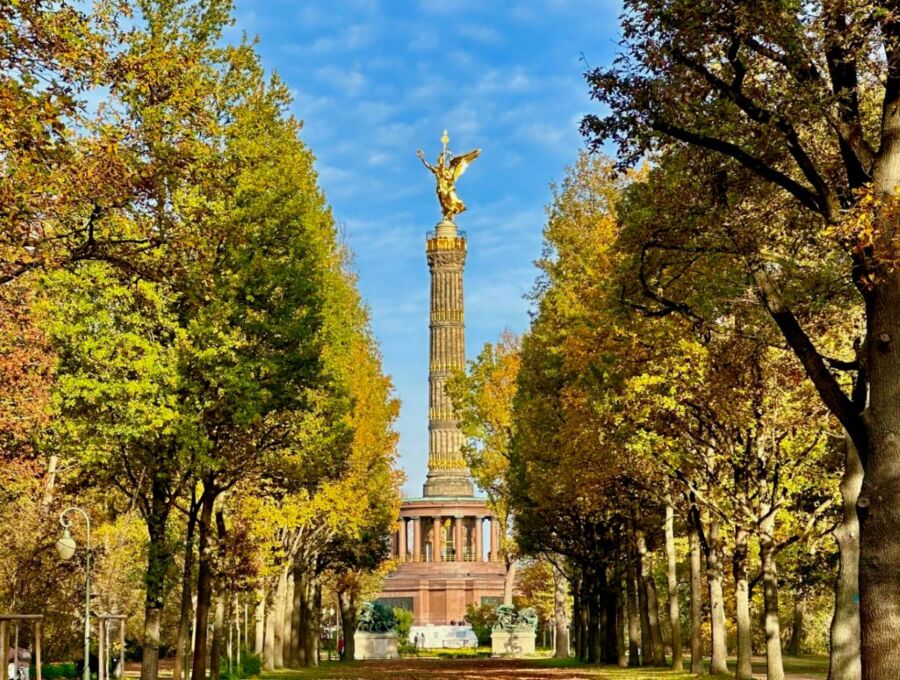
Berlin’s crown jewel is the massive Tiergarten park in the heart of the city. This 520-acre urban oasis features winding paths, peaceful lakes, and beautiful gardens. The park connects to Potsdamer Platz, making it easy to go from bustling city life to serene nature.
Frankfurt’s Palmengarten stands out as Europe’s largest botanical garden. The garden showcases exotic plants from around the world in beautiful greenhouses and outdoor areas. The city’s unique Green Belt forms a ring of parks and forests around Frankfurt, covering about one-third of the urban area.
Outdoor Activities and Leisure
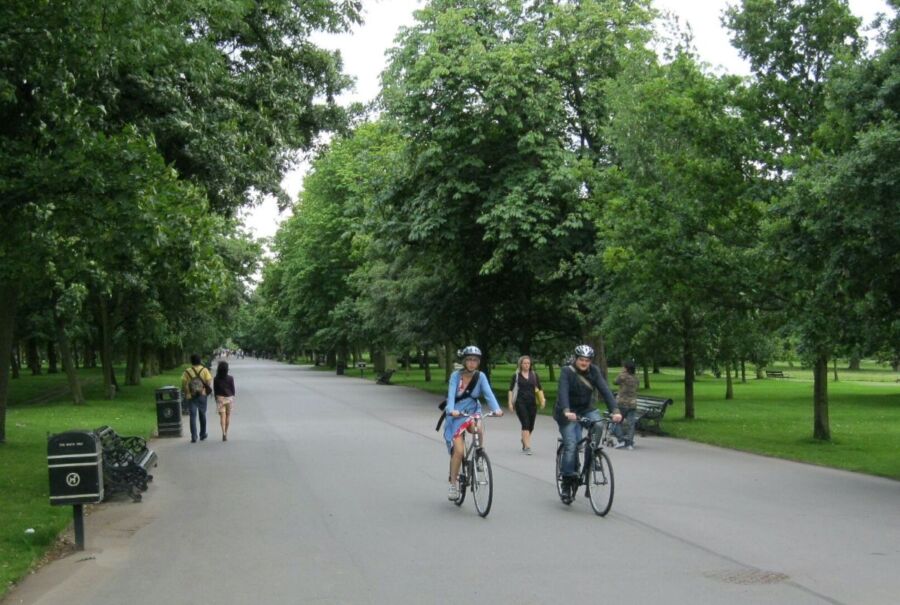
Berlin’s parks offer plenty of ways to stay active. Visitors can rent boats on the lakes, join outdoor yoga classes, or have picnics on the grass. Many parks host outdoor movies and concerts during summer months.
Frankfurt’s green spaces focus on recreation and exercise. The Green Belt features miles of hiking and biking trails. Sports fields and playgrounds dot the parks throughout the city.
The parks in both cities come alive on warm days. Locals and tourists gather to relax, exercise, or simply enjoy fresh air away from busy streets.
Connectivity and Transportation
Both Berlin and Frankfurt offer excellent transport systems that connect people within the cities and to other major German destinations. The two cities have invested heavily in their public transit networks.
Public Transport Networks
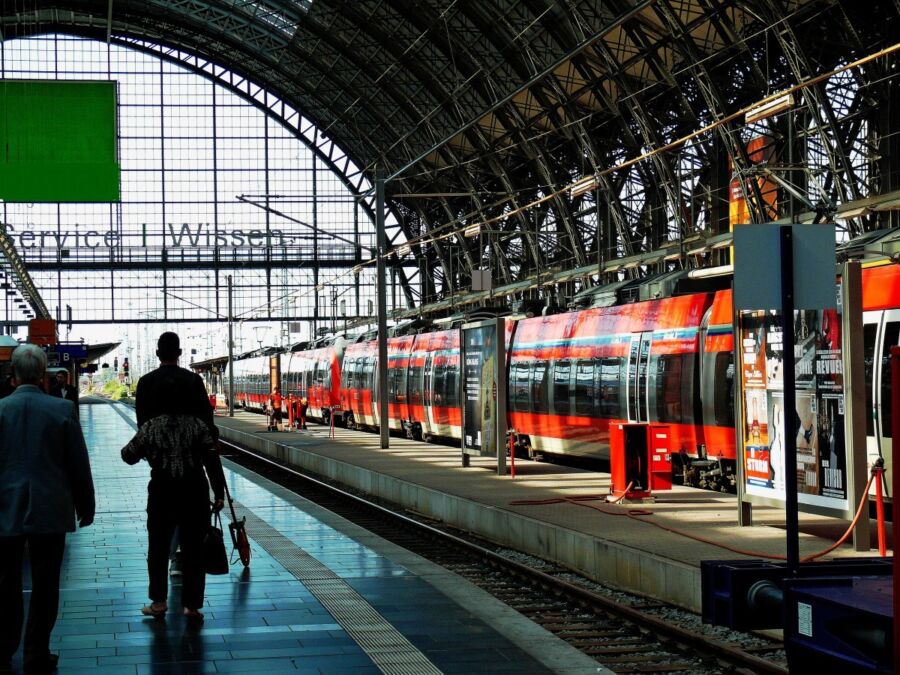
Berlin runs one of Europe’s biggest public transport systems. The U-Bahn and S-Bahn trains form the backbone of the network, covering most areas of this sprawling city. Trains run frequently – every 3-5 minutes during peak times.
The Frankfurt transit system is smaller but very efficient. The city’s compact size means shorter average commute times compared to Berlin. Most destinations sit within easy reach of a U-Bahn or S-Bahn station.
Both cities use integrated tickets that work across all types of transport. A single ticket lets you freely hop between trains, trams, and buses.
Ease of Access to Nearby Attractions
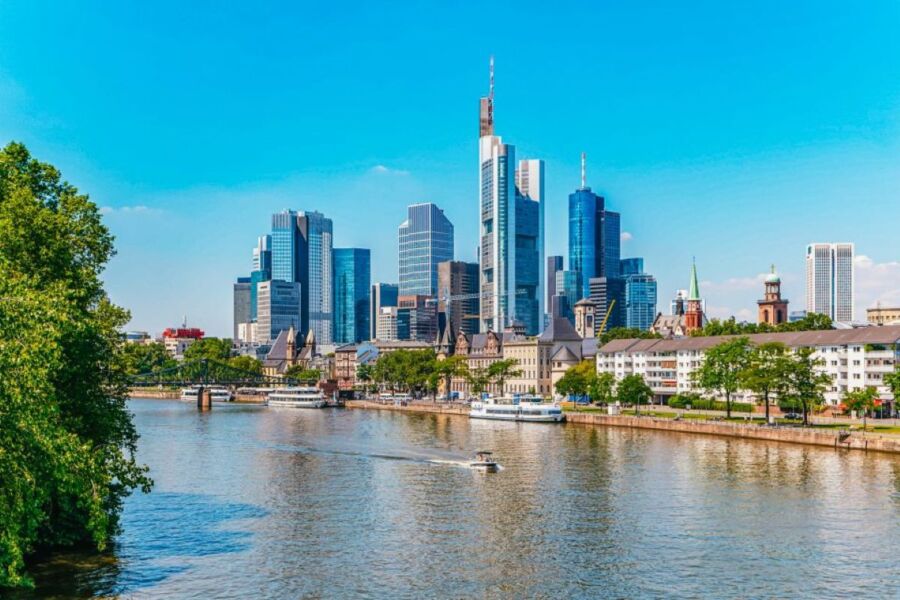
Berlin’s transport links make day trips simple. Trains connect quickly to Potsdam with its palaces and gardens. Dresden and Leipzig sit just a few hours away by rail.
Frankfurt’s position along the Main River creates great connections. Fast trains reach Stuttgart and Cologne in about an hour. The central station serves as a major hub for traveling across Germany.
Frankfurt Airport is one of Europe’s busiest, offering more international flights than Berlin’s airports. This makes Frankfurt perfect for exploring beyond Germany.
Accommodation Options
Both Berlin and Frankfurt offer diverse lodging choices that fit different budgets and travel styles. Berlin tends to have more affordable options spread across varied neighborhoods, while Frankfurt’s accommodations focus on luxury and business travelers.
Hotels and Hostels
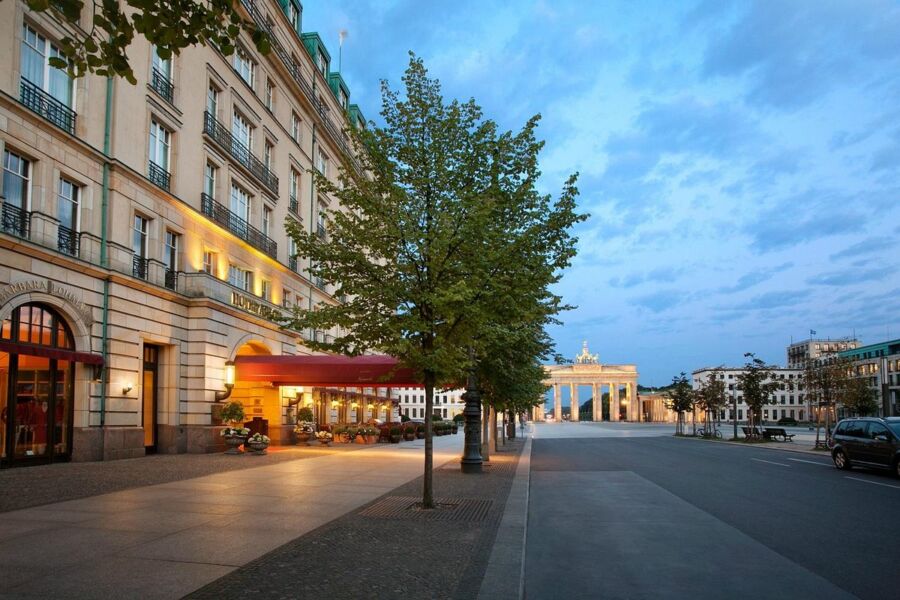
Berlin’s hotel scene spans from budget-friendly spots to luxurious stays. A 3-star hotel in Berlin costs around $76 per night, while 5-star properties average $233.
The Charlottenburg district features upscale hotels perfect for those seeking comfort and elegance. East Kreuzberg attracts younger travelers with its affordable hotel options.
Frankfurt’s hotels cater mainly to business travelers, with many clustered near the Römerberg area. The city’s accommodation prices run higher than Berlin’s due to its role as a financial hub.
Alternative Lodging Choices
Berlin’s size means more choices in different neighborhoods. Each area offers a unique vibe – from the artsy scenes to quiet residential spots.
Many travelers pick apartments in Berlin’s diverse districts. This choice lets them experience local life while saving money on longer stays.
Frankfurt’s alternative lodging focuses on short-term rentals near the city center. These options work well for business travelers who want more space than a hotel room provides.
Student housing becomes available during summer breaks in both cities. This creates budget-friendly choices for backpackers and solo travelers.
Architecture and City Design
Berlin and Frankfurt showcase two distinct architectural identities – Berlin blends historical landmarks with modern designs, while Frankfurt mixes medieval charm with gleaming skyscrapers.
Historic and Modern Architecture
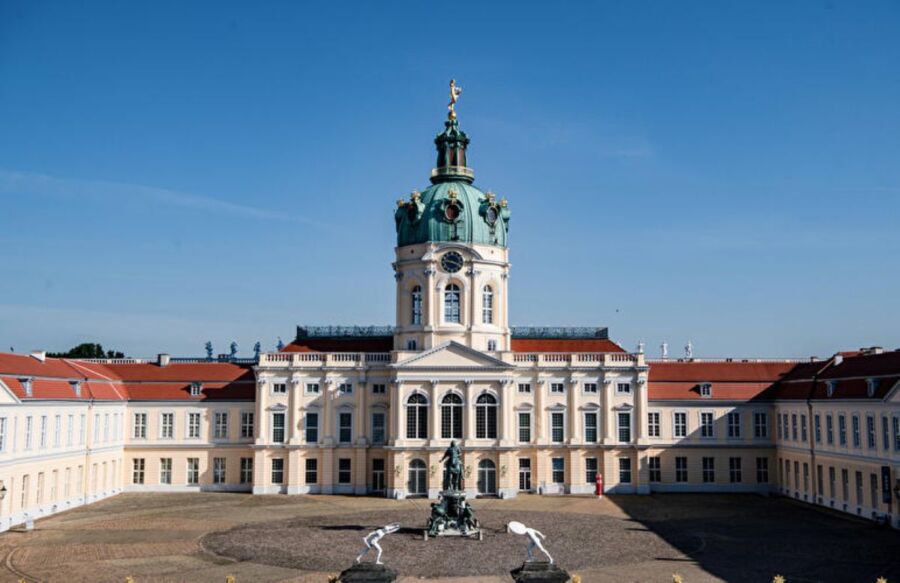
Berlin’s architecture tells stories through its buildings. The Reichstag building stands proud with its glass dome, symbolizing transparency in government. The baroque Charlottenburg Palace shows off royal grandeur with its ornate gardens and gilded rooms.
The city keeps pieces of its past alive. Parts of the Berlin Wall still stand as reminders of divided times. The Brandenburg Gate mixes classical design with modern meaning as a symbol of unity.
Frankfurt’s old town charms visitors with the Römerberg square. Medieval buildings line the plaza, topped with stepped gables and timber frames. The Gothic Frankfurt Cathedral rises above the city center, rebuilt twice after fire and war damage.
Urban Planning and Cityscapes
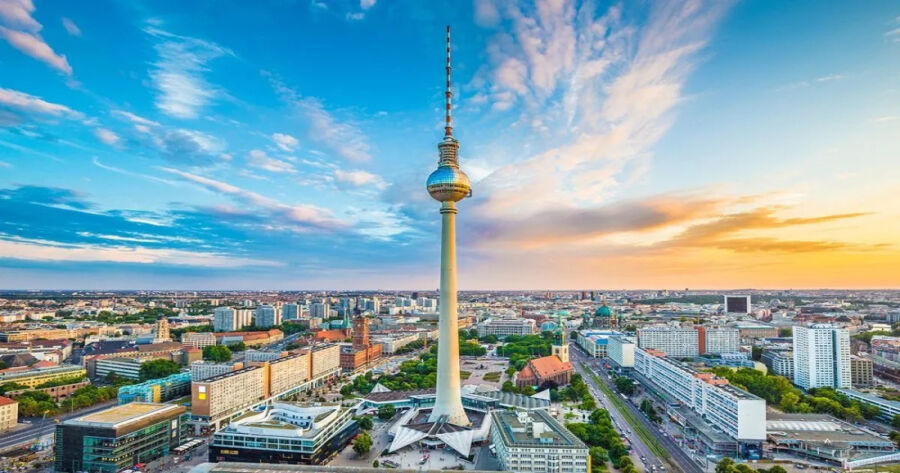
Berlin spreads out with wide boulevards and green spaces. The city breathes through its parks and urban forests. Alexanderplatz buzzes as a transport hub, marked by the TV Tower piercing the sky.
Frankfurt packs more into less space. Modern glass towers create a dense financial district nicknamed “Mainhattan.” The Main River splits the city, with promenades and bridges connecting both sides.
Green spaces dot both cities. Berlin’s Tiergarten offers paths through nature. Frankfurt’s City Forest ranks as one of Germany’s largest urban woods.
Streets in both cities mix shops with homes. Berlin’s neighborhoods keep their character. Frankfurt balances its business core with quiet residential areas.
Frequently Asked Questions
Berlin and Frankfurt differ significantly in costs, culture, and city life. Each German city draws different types of people based on lifestyle preferences, career goals, and desired living experiences.
Which city offers a more affordable cost of living, Berlin or Frankfurt?
Berlin stands out as the more budget-friendly choice. Rent prices in Berlin run about 30% lower than Frankfurt, with a one-bedroom apartment in central Berlin costing around €1,200 compared to €1,600 in Frankfurt.
Food, entertainment, and public transport also cost less in Berlin. A meal at a mid-range restaurant in Berlin costs about €15-20, while similar meals in Frankfurt often reach €25-30.
How do weather patterns differ between Frankfurt and Berlin?
Frankfurt enjoys milder temperatures throughout the year. The city sees average summer highs of 24°C (75°F) and winter lows rarely dropping below 0°C (32°F).
Berlin experiences more extreme temperatures. Summers can reach 30°C (86°F), while winters often drop below freezing with more snowfall than Frankfurt.
In terms of size and population, how do Berlin and Frankfurt compare?
Berlin is 892 square kilometers and has 3.7 million residents, making it Germany’s largest city by both area and population.
Frankfurt covers 248 square kilometers and has around 750,000 residents. The smaller size makes Frankfurt easier to navigate and explore.
Discuss the benefits of residing in either Berlin or Frankfurt
Berlin offers a rich arts scene, diverse neighborhoods, and lower living costs. The city attracts creative professionals and startups with its vibrant atmosphere and cultural opportunities.
Frankfurt draws financial professionals and international workers. The city provides excellent career prospects in banking and business, as well as strong international schools and transport links.
Between Berlin and Frankfurt, which city is generally perceived as more popular among residents and tourists?
Berlin welcomes about 13.5 million visitors yearly, making it Germany’s top tourist destination. The city’s history, nightlife, and cultural attractions draw people from around the world.
Frankfurt receives roughly 6 million visitors annually. Many come for business or use the city as a travel hub rather than a primary destination.
What are the key differences in the cultural scenes of Berlin and Frankfurt?
Berlin boasts over 170 museums, countless art galleries, and famous nightclubs. Street art covers many buildings, and festivals happen almost every weekend.
Frankfurt focuses more on traditional culture with its historic opera house, traditional German restaurants, and classical music venues. The city hosts major trade fairs and maintains a more business-oriented atmosphere.



